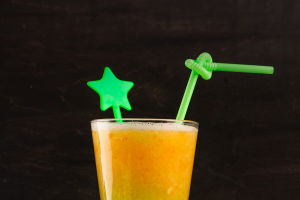Welcome to a look into the world of aquaculture, a fast-growing sector that might just be the answer to one of the biggest challenges humanity faces: feeding a rapidly growing population.
By the year 2050, more than 9.7 billion people will need access to nutritious food. With less space for traditional agriculture and an increasing demand for protein sources, the global food system must evolve.
Lykkers, let’s explore how aquaculture is shaping the future of food in a sustainable way.
<h3>Understanding Aquaculture</h3>
<b>What is aquaculture?</b>
Aquaculture refers to the controlled cultivation of aquatic organisms in freshwater or saltwater environments. It includes:
- Fish farming
- Shellfish production
- Shrimp cultivation
- Seaweed farming
<b>Global growth and expansion</b>
Since the 1970s, aquaculture has seen impressive growth. In 1974, it accounted for just 7% of aquatic food supply. By 2014, this had increased to over 40%. Some countries in Asia, including China, India, Indonesia, and Vietnam, are leaders in the field. Meanwhile, regions like Europe and North America contribute smaller shares.
<b>France and Europe’s position</b>
Despite having access to extensive maritime areas, France contributes less than 0.2% of the global total. The entire European Union accounts for about 9% of production, far behind the Asia-Pacific region, which produces 74%.
<h3>Why Aquaculture Matters</h3>
<b>Feeding more people, using less space</b>
Aquaculture supports food production along coastlines and uses vertical water columns to multiply output without needing large land areas.
<b>Efficient nutrient use</b>
Some aquatic species are more efficient in converting feed into protein compared to other farm animals. For example, certain fish convert 30% of their feed into edible protein, while other animals may use less than half that rate.
<b>Lower environmental emissions</b>
Unlike some land-based methods of food production, aquaculture doesn’t contribute significantly to harmful gas emissions.
<b>Closer to consumption hubs</b>
Coastal cities can benefit from locally sourced aquatic food, reducing long-distance transportation and improving freshness.
<h3>Environmental Challenges</h3>
<b>Health risks and disease outbreaks</b>
Without proper regulation and monitoring, fish farms can become breeding grounds for illness. In one major case, a major producer experienced heavy losses due to a large-scale outbreak that affected both the industry and local employment.
<b>Overuse of treatments</b>
To control illness in large farms, high quantities of medical treatments are often used. These substances can spread into the surrounding environment, raising concerns about resistant strains that are difficult to manage.
<b>Resource imbalance</b>
Many fish farms depend on smaller wild-caught species as feed. It can take several kilograms of these smaller fish to produce just one kilogram of farmed fish. This creates pressure on smaller fish species that could otherwise be used directly as food.
<h3>Pathways to Sustainable Aquaculture</h3>
<b>Encouraging herbivorous and omnivorous species</b>
Farming species that consume plant-based or mixed diets helps reduce the need for feed made from other aquatic animals.
<b>Innovative feed alternatives</b>
One promising method involves using insect larvae, grown from agricultural waste, as feed. Studies have shown this method to be a more sustainable and circular approach to aquaculture.
<b>Integrated systems</b>
Integrated multi-species farming is being explored, where different organisms such as seaweed, shellfish, and fish coexist. These species support one another by sharing resources, leading to a more balanced and environmentally friendly system.
<h3>The Rise of Eco-Friendly Aquaculture</h3>
<b>Organic practices on the rise</b>
Eco-certified aquaculture is gaining popularity among consumers who are increasingly focused on sustainable and responsible sourcing. Though still a small portion of the total market, it is growing steadily.
<b>What makes it organic?</b>
Standards vary by region but often require natural breeding methods, minimal use of chemicals, and sustainable feed sources. Farms must also avoid certain practices like artificial oxygenation and the use of harsh cleaning agents.
<b>Multi-trophic aquaculture</b>
This approach goes a step further by designing ecosystems that allow species to feed naturally from each other, minimizing waste and enhancing biodiversity.
<h3>Conclusion</h3>
<b>Lykkers, the future of food is swimming just beneath the surface.</b> Aquaculture has the potential to become a key player in securing global food availability. While it comes with environmental challenges, continuous innovation and responsible practices can turn it into a strong solution for the decades to come.
Through better regulation, improved methods, and greater awareness, aquaculture can nourish people, support local economies, and protect aquatic environments for generations ahead.
Let’s keep exploring how smart choices in food production can create a healthier, more sustainable world.





